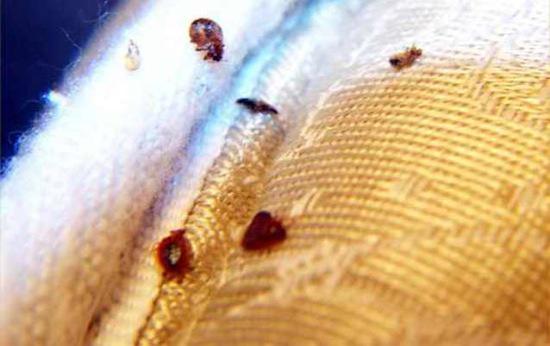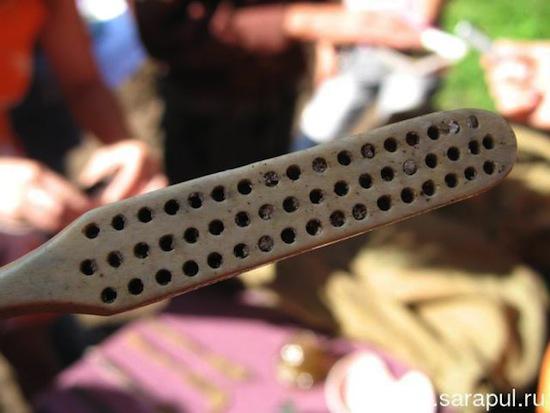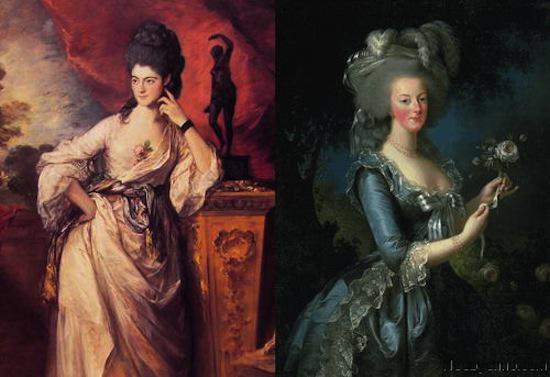613
10 unpleasant facts about the 18th century
We offer you a selection of the unpleasant facts about the hygiene of the 18th century.
1. Today, we appreciate personal hygiene, but until the early 18th century a person could in all his life never to dive into the water. Many people believed that bathing - it is an unhealthy thing, "soaking" of his body in the water, especially hot, it allows various types of diseases and infections enter the body. Even if people still dare to take a bath, he did it with clothes! This tradition has been preserved until the end of the 19th century.

2. Prior to the 1880s, people did not think about creating a deodorant: despite the fact that most of them most of the time very bad smell, no discomfort from it, they have not experienced. Rich tried to mask the bad smell lots of spirits, which led to even more disastrous results.
It is worth noting that in the 9th century scholar Ziryab (Ziryab) suggested the idea of creating a deodorant for armpits, but it did not stick. Up until 1888, the year nothing of the sort existed. And this year began mass production of the first deodorant that had phenomenal success in the West. These deodorants are available today, they are manufactured under the brand name "Mama».

3. Women do not treat hair on his body. In the Western world body hair removal it was not common until the 1920s. Certainly today there are countries where women do not take anything with her hair on the body, but for most it was a natural part of personal hygiene.

4. House at that time smelly natural secretions of the human body. There was no running water, and most people are relieved in a pot, which could leave as long as someone does not hesitated to throw its contents into the nearest window. Later, the pots were kept in some houses, when it created an open toilet. Even in the Victorian era, the pots were used as emergency toilet at night.

5. Toilet paper was coined in the late 18th century, and until then people used the means at hand. The rich could afford the luxury of wipe cloth rags. Poor use old rags, leaves, moss and hands. Even the ancient Romans lived better than they were used for this purpose the fabric wound on a stick, and then dipped it in a bucket of water.

6. Infection bedding beetles and insects taken in the 18th century looming. They were considered the norm. These insects were certainly the cause of the spread of numerous diseases. They remained an ongoing problem until modern times. In the Victorian era, women were encouraged to wipe the bottom of the bed with kerosene to kill unwanted guests.
7. Some of the women during the critical days used a piece of cloth, and often one and the same; Moreover, these grafts were dried in a prominent place at the same time with other things, it is no embarrassment. Therefore, it was better not to look over the fence to the neighbors. However, there were some women who did not use anything, and allowed gravity to 'do their job ».

8. In large cities, the streets smelled like a mixture of manure, human excrement and rotting plants. When the next time you will see in the film, as a man of the 18th century gallantly throws his cloak on the ground that his lady has passed, remember: it is likely that it covers not puddle.

9. Dental hygiene was a use of toothpicks and gum wiping cloth. Women tend teeth were in a worse condition than men due to the loss of vitamins during pregnancy.
For wealthy people Marvis Italian company in the early 1700s began to produce toothpaste (they still continue to produce it). But frankly, the people were more than puzzled by buying meat than Italian toothpaste.

10. Absolutely everyone at the time was infested with lice. And they chose a wonderful treatment for this: Mercury! In the 18th century, Europe has had an affair with mercury. They ate it, rubbed into the skin, becoming mad and died. With regard to the "positive" side - first it was killing lice.
via factroom.ru
1. Today, we appreciate personal hygiene, but until the early 18th century a person could in all his life never to dive into the water. Many people believed that bathing - it is an unhealthy thing, "soaking" of his body in the water, especially hot, it allows various types of diseases and infections enter the body. Even if people still dare to take a bath, he did it with clothes! This tradition has been preserved until the end of the 19th century.

2. Prior to the 1880s, people did not think about creating a deodorant: despite the fact that most of them most of the time very bad smell, no discomfort from it, they have not experienced. Rich tried to mask the bad smell lots of spirits, which led to even more disastrous results.
It is worth noting that in the 9th century scholar Ziryab (Ziryab) suggested the idea of creating a deodorant for armpits, but it did not stick. Up until 1888, the year nothing of the sort existed. And this year began mass production of the first deodorant that had phenomenal success in the West. These deodorants are available today, they are manufactured under the brand name "Mama».

3. Women do not treat hair on his body. In the Western world body hair removal it was not common until the 1920s. Certainly today there are countries where women do not take anything with her hair on the body, but for most it was a natural part of personal hygiene.

4. House at that time smelly natural secretions of the human body. There was no running water, and most people are relieved in a pot, which could leave as long as someone does not hesitated to throw its contents into the nearest window. Later, the pots were kept in some houses, when it created an open toilet. Even in the Victorian era, the pots were used as emergency toilet at night.

5. Toilet paper was coined in the late 18th century, and until then people used the means at hand. The rich could afford the luxury of wipe cloth rags. Poor use old rags, leaves, moss and hands. Even the ancient Romans lived better than they were used for this purpose the fabric wound on a stick, and then dipped it in a bucket of water.

6. Infection bedding beetles and insects taken in the 18th century looming. They were considered the norm. These insects were certainly the cause of the spread of numerous diseases. They remained an ongoing problem until modern times. In the Victorian era, women were encouraged to wipe the bottom of the bed with kerosene to kill unwanted guests.
7. Some of the women during the critical days used a piece of cloth, and often one and the same; Moreover, these grafts were dried in a prominent place at the same time with other things, it is no embarrassment. Therefore, it was better not to look over the fence to the neighbors. However, there were some women who did not use anything, and allowed gravity to 'do their job ».

8. In large cities, the streets smelled like a mixture of manure, human excrement and rotting plants. When the next time you will see in the film, as a man of the 18th century gallantly throws his cloak on the ground that his lady has passed, remember: it is likely that it covers not puddle.

9. Dental hygiene was a use of toothpicks and gum wiping cloth. Women tend teeth were in a worse condition than men due to the loss of vitamins during pregnancy.
For wealthy people Marvis Italian company in the early 1700s began to produce toothpaste (they still continue to produce it). But frankly, the people were more than puzzled by buying meat than Italian toothpaste.

10. Absolutely everyone at the time was infested with lice. And they chose a wonderful treatment for this: Mercury! In the 18th century, Europe has had an affair with mercury. They ate it, rubbed into the skin, becoming mad and died. With regard to the "positive" side - first it was killing lice.
via factroom.ru
30 facts about Montenegro through the eyes of Ukrainian
Older cats meow more because of senile dementia























